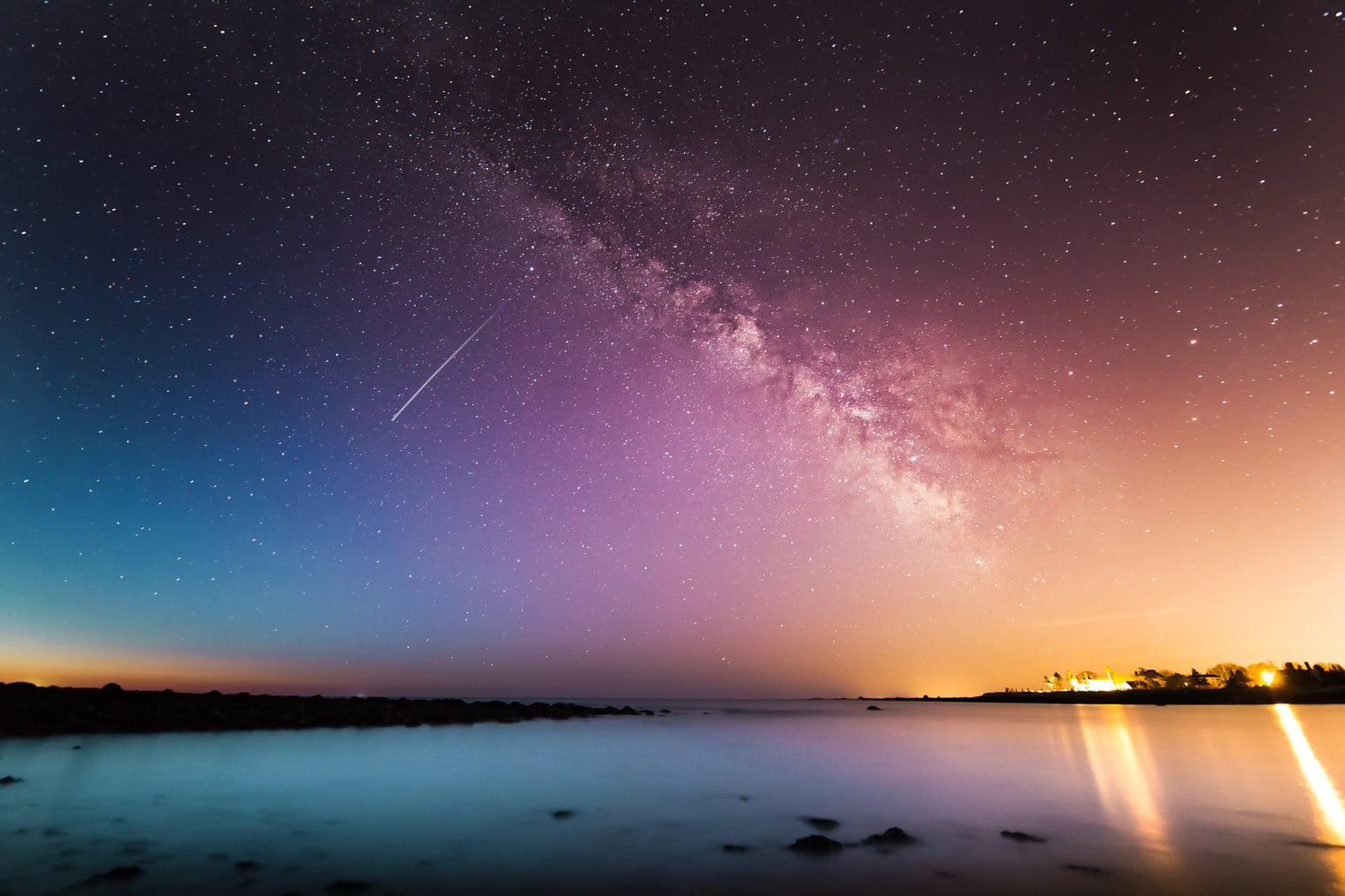If you’ve had a close enough look, you may have noticed the Pagan Wheel of The Year around the centre of the Moon Calendar.
But what is it and what is it for?
Well, let me introduce you to the beautiful and ancient world of Paganism to explain…
What is Paganism and what do Pagans believe?
Paganism is a diverse religion with a wide variety of traditions and beliefs. The fundamental key principles are based around:
- A respect for nature. Nature is at the centre of Pagan belief. The power of the natural world and the cycle of birth, death and rebirth. Connection and harmony between the living and natural world is a really important part of Paganism.
- The divine and showing respect for the varying concepts of the divine. There is a strong emphasis on the balance of equality between the masculine and feminine energies (more on this later!) in all things and a deep sense of awe and reverence for the natural world.
- Pagan theology and acknowledgement of the Wheel of Life. Recognising the ebb and flow of the passing seasons provides a central rhythm to Pagan life.
There is no set way to practise Paganism, rituals are performed in a variety of ways and through different contexts, all of which enable contact to be made to the natural world.
Paganism allows individuals to choose how to honour the Sabbats - these are the phases of the Pagan Wheel Of The Year and there is no right or wrong way to honour them. It is about observation, reflection and then choosing what feels right at different parts of the year and their different contexts.
Is there a difference between Pagan and Wiccan?
Paganism is a broad term for a religious practice that dates back to the early 4th century and has since been divided into many other religions.
The rituals of modern Wicca practice can be traced back to feminist Margaret Murray but it was actually given its name and popularised in the 1950’s by the British civil servant, Gerald Gardener.
Wicca is a religion that falls under the Pagan umbrella as well as Witchcraft. The Pagan religion includes worshipping many different Gods and also includes atheists who mainly worship nature, whereas Wiccans honour two Gods, respecting both the masculine and feminine energies.
So Wicca is a modern sub-type of Paganism.
The Pagan Wheel of the Year
There are eight Pagan/Wiccan holidays known as Sabbats - celebrated around the world.
They are seasonal celebrations representing the cycle of birth, death and rebirth whilst also being based on the Earth’s rotations and seasonal markers.
The Pagan seasonal cycle is known as the Wheel of the Year and can be found on the Moon calendar celebrating nature’s life cycles.
The Sabbats are split into two categories, four ‘Greater Sabbats’ which are known as ‘Earth Festivals’ or ‘Moon Sabbats’ - Imbolc, Beltane, Lammas and Samhain.
Then four ‘Lesser Sabbats’, the points in the solar calendar that represent the beginning of each season - Spring and Autumn Equinox and Summer and Winter Solstice.
Just as there are no beginnings or endings in nature, the wheel is cyclical and never stops turning.
The themes of the Sabbats have many similarities to other religious celebrations and seasonal festivals. The reason for this is that Paganism predates many religions and influenced their development.
The eight Sabbats are roughly spaced out every 7-8 weeks across the year.
|
Sabbat |
Associated holiday traditions /seasonal markers. |
Symbolism/Reflections |
|
Samhain |
Halloween |
Pagan New Year - honouring the dead Cleansing and releasing |
|
Yule |
Christmas Winter Solstice |
Rebirth - life triumphs over death |
|
Imbolc |
Candlemas |
Purification, initiation and dedication |
|
Ostara |
Easter Spring equinox |
Conception, regeneration and new beginnings |
|
Beltane |
May Day |
Passion that fuel Life, joy and fertility. |
|
Litha |
Summer solstice |
Transition, planning |
|
Lammas |
First Harvest |
Gratitude, abundance and fruition |
|
Mabon |
Thanksgiving (second harvest) Autumn Equinox |
Giving thanks and reflection |
The Eight Sabbats
YULE (approx 21st/22nd December)
Also known as Winter Solstice, Yule is one of the four lesser sabbats. In the Northern Hemisphere it is celebrated on the shortest and darkest day of the year as the Earth tilts away from the Sun (usually around 21st December).
It is one of the oldest winter celebrations in the world. As Yule passes, days begin to lengthen and the cycle begins once again.
In the Southern Hemisphere, people celebrate the Summer Solstice at this time as half of the Earth is tilted towards the Sun making it the longest day of the year, so the Wheel is observed in opposition if you live south of the Equator.
For Wiccan’s, symbolically, the Sun God is reborn in his new form on this day, though he died at Samhain.
IMBOLC (approx 1st- 2nd February)
Imbolc is one of the Wheel's four ‘Greater Sabbats’. It celebrates the coming of Spring and increasing daylight and marks the halfway point between Winter Solstice and Spring Equinox.
For Pagans the signs of Spring are starting to be seen, symbolising a time for personal growth and renewed energy, human connections are believed to be best when they are aligned with nature.
So as the first signs of Spring slowly begin, many use this as a time for small tasks to be completed that have been neglected through the year - the perfect time to do some Spring cleaning!
If you are in the US you may also celebrate Groundhog Day at the same time.
Traditionally, it was also a time when the winter food stocks had begun to diminish so rituals were performed to harness celestial energy that would ensure a steady supply of food.
OSTARA (approx 19th-21st March)
Also known as Spring Equinox, Ostara is one of the four ‘Lesser Sabbats’. Ostara is celebrated around 21st March, the Spring Equinox, when the day has an equal amount of sunlight and darkness.
This solar festival is the opposite point on the wheel to Mabon (Autumn Equinox). The Spring Equinox represents a sexual union and celebrates the renewed life of the Earth.
Pagan’s believe that the changes that are happen are due to an increase in powers of their God’s/Goddesses. Wiccan’s believe that it is a time when the masculine God is beginning to mature and the feminine Goddess is coming into full power.
BELTANE (approx April 30th - May 1st)
One of the four ‘Greater Sabbats’ and opposite in the cycle to Samhain, Beltane is a celtic word which means ‘fires of Bel’ - Bel being a celtic deity.
Fire is one of the most important features of most Beltane celebrations. It marks the beginning of summer and is often celebrated by decorating homes and animals with primrose and other spring flowers and dancing round the Maypole.
Beltane and Samhain are the points in the year where the veil between the living and the spirit world is thin. This is believed to enable communication between the living and the dead. Wiccans celebrate the mating of the God and Goddess at this time, making it the holiday of love and romance. Which is no doubt why it is such a popular day for Wiccans to get married.
LITHA (approx 20th - 21st June)
Also known as Midsummer or Summer Solstice, Litha is one of the four ‘Lesser Sabbats’.
Litha is seen as one of the high points in the cycle. Lithia means a ‘stopping’ or ‘standing still’ of the sun.
It is the longest day and shortest night of the year and a time when the sun is at its highest point; each day after Litha, the days begin to get shorter.
Nature is at her peak and it is a time to celebrate growth and life but also to give thanks and ask for a rich upcoming harvest.
In England, many Pagans and non-Pagans visit ancient sacred sites such as Stonehenge to see the sun rise from the ancient stone circle.
Wiccan’s also believe it is a time when the Goddess is heavily pregnant and the God reaches his full power.
LAMMAS (approx 1st August)
Lammas is also known as Lughnasadh is one of the four ‘Greater Sabbats’. Along with Mabon and Samhain, Lammas is also one of the first of the year’s harvest festivals.
It is on the opposite side of the wheel to Imbolc and marks the halfway point between Summer Solstice and Autumn Equinox.
It is a time for harvesting and giving thanks, and a time to reap what has been sown earlier in the year. The harvest period continues until Samhain.
Pagan’s believe that Lammas is a time to be grateful for what we receive and share our plenties with others. For Wiccan’s it is also the time at which the God's power begins to decline.
MABON (approx 22nd and 23rd September)
The Autumn Equinox is the second of the wheel's three harvest festivals. It is at the opposite point on the wheel to Ostara (the Spring Equinox) and is one of the four ‘Lesser Sabbats’.
Mabon falls towards the end of September and astrologers recognise this as the date the sun enters the sign of Libra - the Scales of Balance.
It is a day of equal day and night. Mabon falls in line with the traditional European Harvest festivals giving thanks for the harvest and filling the food stores for winter.
For many Pagans now is the time to reflect on the past season and recognise that the balance of the year has changed and summer is now over.
Wiccan’s believe that it is at this point in the cycle when the Goddess moves from ‘Mother’ to ‘Crone’.
SAMHAIN (October 31st - November 1st)
Samhain is known as ‘The Greater Sabbat’ and Halloween to many Pagans. It is the last harvest festival of the cycle celebrated on 31st October.
The word Samhain comes from an Irish word meaning ‘Summer’s End’ and refers to the whole month of November, not just the night of 31st October.
What happens is the opposite of Beltane - the end of summer and it marks the return of winter. It is a time to give thanks for what has happened but to also ask for guidance and set intentions as the cycle begins again.
Endings and death are major themes of this festival as it is believed that the veil between the living world and the dead is at its thinnest and it is the easiest time to communicate with spirits.
Because of this it is also believed that it is one of the most effective nights to do magic.
For Wiccan’s it signifies the final victory of darkness over light and death of the God. The Goddess reaches her highest point and is pregnant with the God that will be born at Yule…
and so the cycle begins again!
Found this helpful? Share it on Facebook, Instagram or text it to a friend :)

